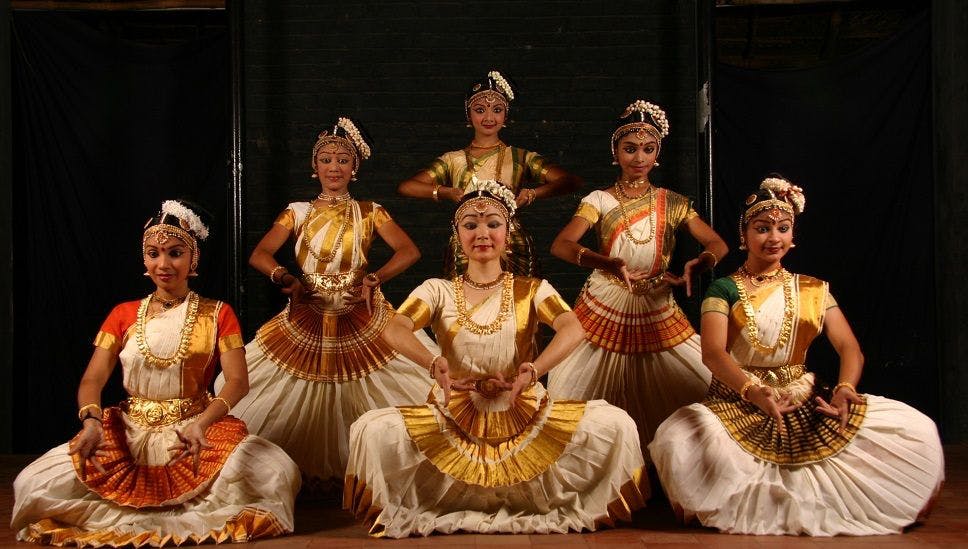There are enough indicators in Silapathikaram that make us believe that a dance form which was a harbinger of Mohiniyattam was in vogue during those days.
Silapathikaram
After the Sangha period, Silapathikaram reveals a lot about the music and dance of the Chera culture. The treatise was authoured by Ilango Adikal, the brother of the Chera king Chenguttuvan. He is believed to have composed Silapathikaram while leading his life as a Jain monk in the temple of Thirukkunavayil. This temple is either the Thrikkannamathilakam in Mathilakam or Koodalmanikyam temple of Irinjalakuda of present Kerala.
Irinjalakuda and Kodungallur still retain a lot of archaeological evidence of Jainism that was a major religion of that period. Historians have also considered the resemblance between Kannaki, the central character of Silapathikaram and Kodungalloor Amma, the main idol of Kodungallur temple in forming this opinion. Silapathikaram also mentions Parayur Kuthachakkayyan whose name resembles the words Koothu and Chakyar of modern times.
Natyashastra of South India
The information that Silapathikaram provides about dance and theatre is so much that it is sometimes referred to as the Natyashastra of South India. There is a detailed description of the dance of the character Madhavi in the chapter of Arangetrukaathai. The abilities of the accompanists for the dancer on percussion (Mridangam/Maddalam) and string instruments (Veena/Yaazh) and the Natyacharya (Guru and conductor of the dance) are also described in detail. Additionally, the stage, curtains and props used are also mentioned in detail as if the author himself was present at the scene. The appearance and beginning of the performance (Rangapravesha) of Madhavi on the stage is described as follows:
Everyone including the king sat on their designated seats. Then the orchestra adjusted the pitch of their respective instruments. Elderly singers sat on the stage and sang the hymns in praise of the gods and percussionists accompanied in distinct rhythms. The dancer first performed behind the curtains. Then she revealed herself before the audience and did the ritualistic performances. She did the desi koothu followed by the marga koothu. One can easily find these sequences followed more or less similar in the modern-day performances of dance and theatre forms like Bharatanatyam and Mohiniyattam. Towards the end, a Kurathy dance used to perform in Mohiniyattam and Bharatanatyam until recent years.
We can see the abhinaya skills of Viralis described in Silapathikaram too. In the Arangetram Kaathai of Silapathikaram Viral is defined as the acting technique by which the actor empathises with the character that he or she portrays and the emotions are expressed with the utmost truthfulness. It is defined as:
“Ullathu nikazhum kurippunikkerpada
Udambilkan nikazhum verupadu”
Meaning: Expressing the emotions of a character by evoking equivalent responses in the actor’s body. This is referred to as Sathwika abhinaya in Natyashastra. Viralis are referred to dancers who have eyes all over their bodies to indicate their skill in acting. Metaphorically we can imagine this as if a peacock is dancing beautifully revealing all the ‘eyes’ on its feathers.
Hand-gestures in Silapathikaram
Silapathikaram gives a detailed description of hand gestures too. The dancer uses various gestures like ‘Pindi’ (single hand / un-joined hands / asamyuta hasta), ‘Pinayal’ (joined hands/double-hands / samyutahasta-s), Elirkai (sobhakai / hand gesture for beauty / Nritta Hasta), Tolirkai (communicative / abhinaya kai / abhayahasta which is meaningful hand gestures for acting), as the occasion demands. But, at the same time, care is taken not to mix up the hand gestures of various forms of dance and acting. So when Madhavi danced using single-hand gestures (Asamyuta hand gestures), double hand gestures (Samyuta hand gestures), and hand gestures of pure dance (nritta hastas/hand gestures used while doing the pure dance) each of them attained their distinct forms.
The hand gestures of dance and the hand gestures of acting which were used in different movements and postures were explicit and never overlapped. It further proves that the same dancer performed different dance pieces. As of today, when different compositions of Mohiniyattam are performed on the same stage by the same dancer, dancers of yesteryears also adhered to the practice. This also adds credence to the belief that there existed a dance form that was very similar to the present day Mohiniyattam in Kerala. Critically examining the narrations given in Arangetrukaathai regarding the variation of music and dance forms, one can realise that it was written by a person who was well-versed in these art forms which prevailed during those times.
Read part 4
(Assisted by Sreekanth Janardanan)


3 Comments
Scholarly research
Thank you
Good points raised with references from Silappadikkaram